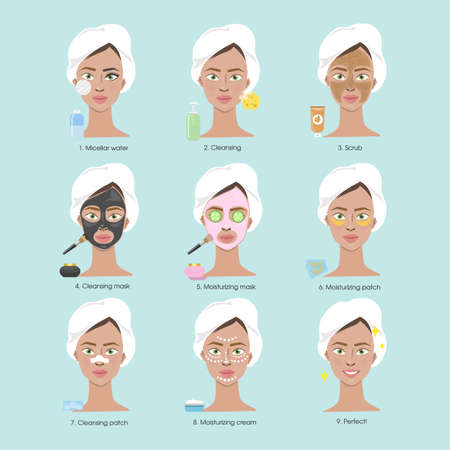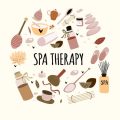1. Understanding Radiofrequency Skin Tightening
Radiofrequency (RF) skin tightening has become a mainstay in the UK’s ever-evolving aesthetic landscape, lauded for its non-invasive approach to rejuvenating and firming the skin. At its core, this treatment uses controlled radiofrequency energy to gently heat the deeper layers of the dermis, stimulating the natural production of collagen and elastin fibres—key components responsible for youthful, resilient skin. The underlying technology is both sophisticated and safe, with modern RF devices engineered to precisely target problem areas without damaging surrounding tissues. Its popularity across British clinics and medi-spas is no coincidence; clients from London to Manchester increasingly favour RF treatments for their minimal downtime and visible results, making it an attractive alternative to more invasive procedures. As awareness spreads and technology advances, radiofrequency skin tightening continues to gain traction among those seeking effective solutions for laxity, fine lines, and early signs of ageing.
Is Radiofrequency Skin Tightening Safe?
When considering radiofrequency (RF) skin tightening in the UK, safety is a top priority for both clinics and clients. The procedure is generally considered safe when performed by qualified practitioners using CE-marked devices that comply with UK and EU health standards. Below is a detailed overview of the safety protocols, regulations, and measures adopted to ensure optimal client protection during RF treatments.
UK Safety Standards and Regulations
In the United Kingdom, RF skin tightening devices must adhere to strict regulatory frameworks established by agencies such as the Medicines and Healthcare products Regulatory Agency (MHRA). These standards ensure devices meet rigorous safety, quality, and performance criteria before they can be used in clinical settings.
| Aspect | Regulatory Standard |
|---|---|
| Device Approval | CE Marking, MHRA Registration |
| Practioner Qualifications | Level 4 or above in aesthetics (recommended) |
| Clinic Licensing | CQC Registration (where applicable) |
How Clinics Ensure Client Safety During Procedures
- Consultation and Assessment: Every reputable clinic will carry out an initial consultation to assess suitability and rule out contraindications such as pregnancy, metal implants, or specific skin conditions.
- Sterile Environment: Strict hygiene protocols are followed, including single-use applicator covers and regular device sterilisation to prevent infection risks.
- Trained Practitioners: Treatments are administered by certified professionals trained specifically in non-surgical RF procedures, ensuring correct device usage and effective handling of any adverse reactions.
- Device Calibration: All equipment is regularly serviced and calibrated to manufacturer specifications to avoid energy surges or malfunctions that could compromise client safety.
Client Aftercare and Monitoring
Post-procedure care is integral to the overall safety protocol. Clients receive tailored aftercare advice regarding skincare routines, sun protection, and signs of rare side effects such as redness or swelling. Clinics maintain open communication channels for follow-up queries or concerns.
In summary, radiofrequency skin tightening is considered safe in the UK when undertaken at licensed clinics following national guidelines. Clients are encouraged to verify practitioner credentials and clinic certifications before booking a treatment for peace of mind and optimal results.

3. Who Is an Ideal Candidate?
Radiofrequency (RF) skin tightening is a versatile, non-surgical cosmetic procedure that has gained popularity across the UK for its ability to address mild to moderate skin laxity and improve overall skin texture. However, suitability can vary based on several factors, including age, skin type, and specific concerns.
Age Considerations
While RF treatments are most commonly sought by individuals in their 30s to 60s experiencing early signs of ageing, younger adults in the UK who notice premature sagging or wish to maintain youthful contours may also benefit. For older British patients with significant skin laxity or deeper wrinkles, RF may deliver modest improvements but is not a substitute for surgical lifting procedures.
Skin Type and Tone
One of the notable advantages of RF technology is its compatibility with all skin types and tones. Unlike some laser-based procedures that carry risks of pigmentation changes, RF is generally safe for those with fair British complexions as well as individuals from diverse ethnic backgrounds living in the UK. This makes it an inclusive choice within the multicultural British context.
Typical Conditions Treated
RF skin tightening is particularly effective for addressing concerns such as mild jowling, loose skin along the jawline or neck, fine lines around the eyes, and crepey skin on the body. It is also popular for post-weight loss clients seeking subtle contouring. In the UK, where environmental factors like fluctuating weather and lower sun exposure can affect skin elasticity differently compared to other regions, many seek RF treatments for their face, neck, and décolletage to restore firmness lost due to both age and climate.
Special Notes for British Demographics
Bespoke consultations are essential as genetic heritage and lifestyle factors—such as smoking rates or UV exposure during rare sunny spells—may influence individual results. Furthermore, given the prevalence of sensitive or rosacea-prone skin among Britons, practitioners will assess medical history to ensure suitability and minimise potential irritation.
4. Expected Results and Longevity
Radiofrequency (RF) skin tightening has become an increasingly popular choice across the UK for those seeking non-surgical solutions to ageing and skin laxity. Understanding what to expect from this treatment, how long the effects last, and the factors that can influence longevity is essential for anyone considering RF procedures.
Typical Results After RF Skin Tightening
Most clients in the UK notice subtle improvements immediately after their first session, particularly in terms of skin texture and mild tightening. However, optimal results typically develop over several weeks as collagen production increases. It’s common for practitioners to recommend a course of treatments—often three to six sessions spaced out over several weeks—to achieve the best outcomes.
| Area Treated | Initial Visible Improvement | Full Results Timeline |
|---|---|---|
| Face & Jawline | Subtle lift within days | Up to 12 weeks post-treatment |
| Neck | Smoother appearance after 1-2 weeks | 8-12 weeks post-treatment |
| Abdomen/Body | Tighter feel after 1-2 sessions | 12-16 weeks post-treatment |
How Long Do Results Last?
The longevity of RF skin tightening results varies between individuals. In most UK-based case studies, noticeable firmness and improved contour can persist for 6–18 months following a full treatment course. Maintenance sessions every 6–12 months are generally advised to prolong effects.
Factors Influencing Longevity in the UK Context
- Lifestyle: Smoking, excessive sun exposure, and poor diet can reduce the duration of results.
- Age: Younger clients often experience longer-lasting results due to more robust collagen production.
- Skin Condition: Pre-existing skin elasticity and health play a significant role; those with moderate skin laxity tend to benefit most.
- Treatment Protocol: Adhering to practitioner-recommended maintenance schedules supports sustained results.
- Technology Used: Advanced RF devices available in leading UK clinics may offer improved durability compared to older technologies.
UK-Based Case Example: North London Clinic Audit (2023)
A review at a prominent North London clinic found that 85% of clients reported visible improvement at three months, with 70% maintaining benefits at one year post-treatment when adhering to recommended maintenance protocols. This aligns well with broader UK trends, reinforcing the importance of personalised aftercare and regular follow-up sessions for lasting satisfaction.
5. Potential Side Effects and Risks
When considering radiofrequency skin tightening in the UK, it is essential to be aware of both common and rare side effects, as well as the typical post-treatment experience for British clients. Most individuals can expect minimal discomfort during and after the procedure; however, it is crucial to have realistic expectations and understand how aftercare is tailored locally.
Common Side Effects
For the majority of patients, side effects are mild and temporary. The most frequently reported issues include slight redness, swelling, or a warm sensation at the treatment area. These symptoms generally subside within a few hours to a couple of days. It is also common to notice minor tenderness or tingling, which resolves quickly without intervention.
Rare or Unusual Reactions
Although uncommon, some individuals may experience more pronounced side effects such as blistering, bruising, or changes in skin pigmentation. Allergic reactions are extremely rare but can occur if there is sensitivity to gels or topical agents used during the session. Practitioners across the UK follow stringent protocols to minimise these risks by conducting thorough consultations and patch tests when appropriate.
What British Clients Should Expect Post-Treatment
Immediately following radiofrequency treatment, clients in the UK are typically advised to avoid excessive heat exposure, direct sunlight, and vigorous exercise for at least 24 hours. Makeup application may be discouraged until any redness has diminished. A cooling gel or soothing cream is often recommended to enhance comfort and support skin recovery.
Local Aftercare Guidance
Clinics throughout the UK provide detailed aftercare instructions tailored to the local climate and lifestyle factors. Emphasis is placed on gentle cleansing routines, adequate hydration, and consistent use of broad-spectrum sunscreen—even on overcast British days—to protect newly treated skin. Follow-up appointments are commonly scheduled to monitor progress and address any concerns promptly, ensuring optimal outcomes for every client.
6. Costs and Availability in the UK
When considering radiofrequency skin tightening treatments, one of the most common concerns among UK residents is the overall cost and accessibility. Average price ranges for a single session typically fall between £150 and £500, depending on factors such as the clinic’s reputation, practitioner experience, and the area of the body being treated. Multiple sessions are usually recommended for optimal results, so it’s important to factor in cumulative costs when budgeting for this procedure.
Regional availability can vary significantly across the UK. Major cities like London, Manchester, and Birmingham boast a greater concentration of clinics offering advanced aesthetic procedures, often with a wide selection of devices and experienced practitioners. However, smaller towns and rural regions may have fewer options, meaning patients might need to travel to urban centres for treatment or settle for less specialised providers locally.
In terms of NHS versus private sector differences, it is crucial to note that radiofrequency skin tightening is generally considered a cosmetic procedure. As such, it is not routinely available on the NHS unless there is a clear medical necessity—such as reconstructive needs following trauma or surgery. The vast majority of treatments are therefore provided by private clinics, where pricing structures can differ and package deals may be offered to incentivise multiple sessions. It is advisable to research local providers thoroughly, read reviews from other UK patients, and request detailed consultations before committing financially.
7. Frequently Asked Questions
Is radiofrequency skin tightening safe for all skin types?
Yes, radiofrequency (RF) treatments are generally considered safe for a wide range of skin types and tones. UK clinics typically use CE-marked devices that adhere to strict safety regulations. However, it is essential to have a consultation with a qualified practitioner who can assess your individual needs and medical history.
How long does the procedure take, and will I need time off work?
Most RF skin tightening sessions last between 30 to 60 minutes, depending on the area being treated. There is minimal downtime, so most clients in the UK can return to work or daily activities immediately after their appointment.
Are the results permanent?
The results are not permanent but can be long-lasting with proper aftercare. The effects typically last up to 12-18 months, but maintenance sessions are recommended every 6 to 12 months to prolong the benefits. Lifestyle factors such as sun exposure and smoking may influence longevity.
Does radiofrequency skin tightening hurt?
Most UK residents describe the sensation as a warm, tingling feeling during treatment. Discomfort is minimal, and clinics often offer cooling gels or devices to increase comfort. If you are concerned about pain or have sensitive skin, discuss this during your consultation.
What should I look for in a reputable clinic in the UK?
Ensure the clinic is registered with the Care Quality Commission (CQC) or another recognised regulatory body. Look for practitioners with appropriate qualifications and experience in RF treatments. Reading local reviews and asking for before-and-after photos can also help you make an informed decision.
Can I combine RF skin tightening with other treatments?
Many clients in the UK choose to combine RF with other non-surgical procedures, such as dermal fillers or microneedling, for enhanced results. Always consult with your practitioner to develop a tailored plan that suits your goals and ensures safety.
Will my skin look natural after treatment?
When performed by an experienced practitioner, RF skin tightening delivers subtle, natural-looking improvements without drastic changes. This aligns well with British preferences for understated aesthetics.


